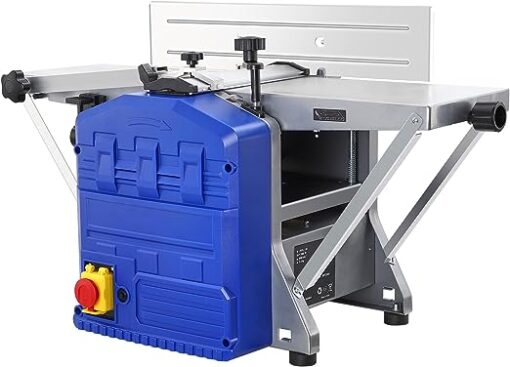The struggle to control time and finances as a DIY business owner can be a challenging task. With the freedom and flexibility that comes with being your own boss, it’s important to establish effective strategies to ensure both productivity and financial stability. In this article, we will explore practical tips and insights on how to effectively manage your time and finances as a DIY business owner, allowing you to maximize your success and achieve your goals. So, whether you’re just starting out or looking to improve your current practices, let’s dive into the world of time and finance management!
Time Management
As a DIY business owner, it’s crucial to have effective time management strategies in place to stay organized, focused, and productive. Here are some key steps you can take to manage your time effectively:
Set clear goals and priorities
Start by setting clear goals for your business. These goals should be specific, measurable, achievable, relevant, and time-bound (SMART goals). Once you have defined your goals, prioritize them based on their importance and urgency.
By having clear goals and priorities in mind, you can align your daily tasks and activities into a logical order and ensure that you are working towards your business objectives.
Create a daily/weekly schedule
Having a schedule is essential for managing your time effectively. Start by blocking out time for your most important and high-value tasks. Identify the times of the day when you are most focused and productive, and allocate those hours for critical activities.
Additionally, break your day into smaller time blocks and assign specific tasks to each block. This way, you can avoid multitasking and dedicate proper focus to one task at a time.
Remember to allocate time for breaks and downtime as well. Taking regular breaks can actually improve your productivity and help you maintain a healthy work-life balance.
Eliminate distractions To Manage Time And Finances As A DIY Business Owner.
Distractions can severely impact your productivity and hinder your ability to effectively manage your time. Identify the common distractions in your work environment and take steps to minimize or eliminate them.
For example, if social media is a major distraction, consider using website blockers or setting specific times for checking your social media accounts. If noisy environments affect your concentration, find a quiet space to work or use noise-cancelling headphones.
Remember, staying focused and minimizing distractions will allow you to make better use of your time and accomplish more in a day.
Delegate tasks when possible
One of the keys to efficient time management is recognizing when it’s appropriate to delegate tasks to others. As a DIY business owner, it can be tempting to handle everything on your own, but delegating tasks can save you time and free you up to focus on more critical aspects of your business.
Identify tasks that can be outsourced to freelancers or contractors, or even to your employees if you have a team. Delegating tasks not only helps you manage your time better but also allows others to develop new skills and contribute to the growth of your business.
Use time management tools and apps
There are numerous time management tools and apps available that can help you stay organized and manage your time effectively. Consider using project management software, task management apps, and calendar tools to streamline your workflow and keep track of deadlines and tasks.
These tools can help you prioritize, manage your time more effectively, and stay on top of your commitments. Experiment with different tools and find the ones that work best for you and your business.
By implementing these time management strategies, you can maximize your productivity, reduce stress, and ensure that your DIY business runs smoothly and efficiently.
Financial Planning
Managing your finances effectively is crucial for the success and sustainability of your DIY business. Here are some key steps you can take to manage your finances efficiently:
Create a budget
Creating a budget is the foundation of good financial planning. Start by analyzing your income and expenses. Identify your fixed and variable costs, such as rent, utilities, inventory, marketing, and operational expenses.
Once you have a clear understanding of your expenses, allocate appropriate amounts to each category based on their priority and significance. A budget gives you a roadmap to guide your spending decisions and helps you track your financial health over time.
Track your expenses
Tracking your expenses is essential to ensure that you stay within your budget and have a clear understanding of where your money is going. Utilize accounting software or spreadsheet programs to record your expenses regularly.
Review your expenses periodically to identify areas where you can cut costs or find more cost-effective alternatives. By tracking your expenses, you can make informed decisions about your spending and prioritize resources for maximum benefit.
Separate personal and business finances
To ensure accurate financial management and reporting, it’s important to keep your personal and business finances completely separate. Open a separate bank account and credit card specifically for your business.
This separation not only simplifies accounting and bookkeeping but also provides a clear picture of your business’s financial performance. It also helps you avoid any potential legal and tax issues that may arise from mixing personal and business finances.
Save for emergencies
Building an emergency fund is essential for the financial health of your business. Having a reserve of cash allows you to handle unexpected expenses or financial downturns without jeopardizing your business operations.
Set aside a portion of your revenue each month to build your emergency fund. Aim to have at least three to six months’ worth of expenses saved up. This fund provides a safety net and gives you peace of mind, knowing that your business can withstand unexpected challenges.
Invest in professional help (if needed)
Managing your finances as a DIY business owner can be overwhelming, especially if you lack experience or expertise in financial matters. Consider investing in professional help, such as hiring an accountant or bookkeeper.
A financial professional can offer valuable guidance, help you understand complex financial concepts, and ensure that your financial records are accurate and compliant. They can also provide insights on tax strategies, financial forecasting, and other areas that can contribute to the growth and stability of your business.
By implementing these financial planning strategies, you can gain control over your finances, make informed decisions, and set a strong foundation for the financial success of your DIY business.

Time-Saving Strategies
As a DIY business owner, your time is precious. Implementing time-saving strategies can help you streamline your workflow, minimize wasted time, and make the most of your limited resources. Here are some effective strategies to save time:
Automate repetitive tasks
Identify tasks that are repetitive and time-consuming, such as data entry, social media posting, or appointment scheduling. Look for automation tools or software that can help you automate these tasks.
For example, you can automate email responses, schedule social media posts in advance, or use project management tools to automate task assignment and progress tracking. By automating repetitive tasks, you free up your time to focus on more value-added activities.
Batch similar tasks together
Multitasking can often lead to decreased productivity and increased errors. Instead, try batching similar tasks together. For example, set aside specific blocks of time to respond to emails, make phone calls, or create content.
By grouping similar tasks together, you can leverage the momentum and mental focus required for those activities, thereby maximizing your efficiency. This strategy minimizes the time lost in switching between different tasks and allows you to maintain better concentration and productivity.
Use productivity hacks
Productivity hacks are techniques or tools that help you work smarter, not harder. These hacks can include time-saving techniques like the Pomodoro Technique, where you work in focused increments followed by short breaks.
Other productivity hacks can involve eliminating distractions, creating a dedicated work area, or using productivity apps like task managers or note-taking tools. Explore different productivity hacks and adopt the ones that align with your work style and maximize your output.
Outsource non-essential activities
As a DIY business owner, it’s not possible (or efficient) to do everything yourself. Identify tasks or activities that are non-essential or outside your core competencies and consider outsourcing them.
Outsourcing tasks like graphic design, content writing, or bookkeeping to freelancers or contractors can free up your time for more critical business activities. Outsourcing allows you to leverage specialized skills and expertise, thereby improving efficiency and saving time.
Prioritize and focus on high-value tasks
Not all tasks have the same level of importance or impact on your business. Learn to prioritize your tasks based on their value and impact.
Identify tasks that directly contribute to revenue generation, business growth, or customer satisfaction, and prioritize them over less critical tasks. Focus your time and energy on high-value activities, as they have a more significant impact on the success of your DIY business.
By implementing these time-saving strategies, you can optimize your productivity, reduce time wastage, and achieve more with the limited time available to you as a DIY business owner.
Financial Record-Keeping
Maintaining accurate and organized financial records is crucial for the financial stability and growth of your DIY business. Here are some key practices to ensure effective financial record-keeping:
Maintain accurate financial records
Accurate financial record-keeping is the foundation of sound financial management. Keep track of all income and expenses related to your business. This includes documenting sales, purchases, salaries, and any other financial transactions.
Use accounting software or online platforms to accurately record and categorize your financial data. Regularly review and reconcile your records to ensure accuracy and identify any discrepancies that need to be addressed.
Use accounting software
Investing in accounting software can significantly streamline your financial record-keeping process. These tools offer features like automated data entry, financial reporting, and tax management.
Accounting software simplifies tasks such as generating financial statements, managing invoices, and tracking expenses. It also helps in maintaining compliance with accounting standards and tax regulations.
Keep receipts and invoices organized
Keep a record of all receipts and invoices related to your business transactions. This includes both paper and digital copies. Organize them in a systematic manner, such as by date or category.
Maintaining organized receipts and invoices makes it easier for you to track expenses for tax purposes, provide evidence during audits, and assess your business’s financial health more accurately.
Regularly reconcile accounts
Regularly reconciling your financial accounts is crucial to ensure accuracy and identify any discrepancies or errors. Reconciliation involves comparing your recorded financial transactions with external sources such as bank statements or supplier invoices.
By reconciling your accounts regularly, you can identify any mismatched or missing transactions, address any errors promptly, and maintain accurate and up-to-date financial records.
Consult with a professional accountant
While you can handle basic financial record-keeping tasks on your own, it’s advisable to consult with a professional accountant for more complex financial matters or when preparing financial statements and tax returns.
An accountant can provide you with valuable advice, ensure compliance with accounting principles and tax regulations, and help you make informed financial decisions. They can also help you understand financial reports and identify opportunities for cost savings and revenue growth.
By following these financial record-keeping practices, you can ensure the accuracy of your financial data, maintain compliance with regulations, make informed decisions, and have a clear understanding of the financial health of your DIY business.

Effective Goal-Setting
Setting goals is crucial for both personal and professional growth. As a DIY business owner, effective goal-setting can help you stay focused, motivated, and aligned with your business objectives. Here are some steps to ensure effective goal-setting:
Define SMART goals
When setting goals, make sure they are SMART: Specific, Measurable, Achievable, Relevant, and Time-bound. A SMART goal clearly defines what you want to achieve, allows you to track your progress, and ensures that your goals are realistic and within your reach.
For example, instead of setting a vague goal like “increase revenue,” a SMART goal would be “increase revenue by 15% in the next quarter by implementing targeted marketing campaigns.”
Break down big goals into smaller tasks
Big goals can be overwhelming and challenging to tackle all at once. Break down your big goals into smaller, manageable tasks. This allows you to create actionable steps and track your progress more effectively.
Breaking down goals also provides a sense of accomplishment as you complete each task, keeping you motivated and focused on your ultimate objective.
Set deadlines and milestones
Having deadlines and milestones ensures that you stay on track and work towards your goals consistently. Set realistic deadlines for your tasks and milestones to assess your progress along the way.
Deadlines and milestones create a sense of urgency and accountability, increasing your chances of achieving your goals within the desired timeframe.
Regularly review and adjust goals
Goal-setting is a dynamic process that requires regular review and adjustment. As your business evolves and market conditions change, it’s essential to review your goals periodically.
Evaluate your progress, assess any challenges or opportunities, and make necessary adjustments to your goals. This allows you to stay agile, align your goals with your current business needs, and maintain a forward momentum.
Reward yourself for achieving goals
Celebrating your achievements is an essential part of effective goal-setting. When you reach a milestone or successfully achieve a goal, take the time to acknowledge and reward yourself.
Recognition and rewards provide motivation, boost morale, and reinforce positive behaviors. Celebrating your successes also helps you stay engaged, fosters a sense of accomplishment, and encourages continued progress towards your goals.
By following these effective goal-setting strategies, you can set yourself up for success, stay focused on your objectives, and achieve meaningful growth and progress in your DIY business.
Cash Flow Management
Cash flow management is vital to the financial health of your DIY business. Effectively managing the inflow and outflow of cash ensures that you have the necessary resources to operate your business and meet your financial obligations. Here are some key cash flow management strategies:
Monitor cash inflows and outflows
Regularly monitor your cash inflows (such as sales revenue, investments, or loans) and outflows (such as expenses, salaries, or loan repayments). By keeping a close eye on your cash flow, you can identify any potential issues early and take necessary actions.
Use cash flow forecasting tools or spreadsheets to project your future cash flow based on your expected income and expenses. This helps you anticipate any cash shortfalls or surpluses and make informed cash flow management decisions.
Maintain a cash reserve
Having a cash reserve or emergency fund is crucial for handling unexpected expenses or economic downturns. Maintain a reserve of cash that can cover at least three to six months’ worth of expenses.
Regularly contribute a portion of your revenue towards building and replenishing your cash reserve. This fund acts as a safety net, ensuring that you can continue operating your business even during challenging times.
Ensure timely invoicing and follow-ups
Timely invoicing and follow-up on payments are essential to maintain a healthy cash flow. Invoice your customers promptly and clearly communicate your payment terms and deadlines.
Implement a system for tracking and following up on outstanding invoices. This may include sending reminder emails, making phone calls, or implementing automated overdue notices. By ensuring timely payments, you can minimize the impact on your cash flow and maintain a healthy financial position.
Negotiate payment terms with suppliers
Managing your cash flow also involves working with your suppliers to negotiate favorable payment terms. Try to extend your payment terms with suppliers to align with your cash flow cycle.
For example, negotiate longer payment windows or ask for discounts for early payments. These negotiations can help you maintain a positive cash flow and improve your working capital position.
Consider flexible financing options
If your cash flow is tight or you need additional funds for business operations, consider flexible financing options like business lines of credit, business loans, or invoice financing.
These financing options provide access to funds when needed and allow you to manage your cash flow effectively. However, ensure that you carefully evaluate the terms, interest rates, and fees associated with these options to make informed financing decisions.
By implementing these cash flow management strategies, you can ensure a steady flow of cash into your business, cover expenses, manage financial obligations, and maintain a healthy financial position as a DIY business owner.

Effective Communication
Effective communication is essential for running a successful DIY business. Clear and efficient communication ensures that everyone involved is on the same page, understands expectations, and can work collaboratively towards shared goals. Here are some strategies to improve your communication:
Set clear communication guidelines
Establish clear communication guidelines for your business. This includes determining preferred communication methods (e.g., email, phone, video conferencing), response times, and etiquette.
Clearly communicate these guidelines to your team, clients, suppliers, and other stakeholders. Consistent communication standards create a foundation of trust, clarity, and accountability.
Use project management tools
Project management tools can streamline communication by centralizing information, tasks, and deadlines. Use project management software to assign tasks, track progress, and communicate with your team.
These tools provide transparency, accountability, and efficient collaboration, ensuring that everyone involved has real-time access to project updates and communicates effectively.
Regularly update clients and stakeholders
Frequent updates to your clients and stakeholders are essential to keep them informed about the progress of projects, changes in timelines, or any other relevant information.
Establish a regular communication schedule or milestone updates to ensure that your clients and stakeholders are engaged and have a clear understanding of project status.
Prioritize and respond to emails promptly
Emails are a primary communication tool for most businesses. To ensure effective communication, prioritize and respond to emails promptly.
Set aside specific times during the day to check and respond to emails, instead of being constantly reactive. Aim to respond within 24 to 48 hours, even if it is just to acknowledge receipt and provide an estimated response time.
Improve active listening skills
Active listening is a crucial component of effective communication. When engaging in conversations or meetings, make an effort to listen actively and attentively.
Focus on understanding the other person’s perspective, ask clarifying questions, and show empathy. Active listening fosters open and meaningful communication and helps build stronger relationships with clients, employees, and other stakeholders.
By implementing these effective communication strategies, you can improve collaboration, minimize misunderstandings, and ensure that your DIY business operates smoothly and efficiently.
Tax Planning and Compliance
As a DIY business owner, understanding your tax obligations and complying with tax laws and regulations is essential to avoid penalties and ensure a healthy financial position. Here are some key steps for tax planning and compliance:
Understand tax obligations for DIY business owners
Educate yourself on the tax obligations specific to your business structure and industry. Understand the taxes you are required to pay, such as income tax, sales tax, payroll taxes, and any other relevant taxes based on your business activities.
Seek guidance from tax professionals or consult government resources to ensure that you are aware of your tax responsibilities and any recent changes in tax laws.
Keep track of deductible expenses
Maintain accurate records of your business-related expenses that qualify for deductions. This includes expenses such as office supplies, equipment purchases, marketing expenses, travel expenses, and home office deductions (if applicable).
Keep receipts and documentation to support your deductions, as they may be required during tax audits or in case of inquiries from tax authorities.
File taxes accurately and on time
Ensure that you file your taxes accurately and in a timely manner. Use the appropriate tax forms and schedules for your business structure (e.g., sole proprietorship, partnership, corporation).
Make sure to include all necessary information, report all income, and claim eligible deductions. Consider using tax software or consulting a tax professional to help you navigate the complexities of tax preparation and ensure compliance.
Stay updated with tax laws and regulations
Tax laws and regulations are subject to change, so it’s important to stay updated. Subscribe to newsletters, follow government websites, or consult with tax professionals to stay informed about any changes or updates in tax laws that may affect your business.
Staying informed allows you to make necessary adjustments to your tax planning strategies and ensures that your business remains compliant.
Consider consulting a tax professional
As a DIY business owner, tax planning and compliance can be complex and time-consuming. Consider consulting a tax professional to ensure accurate and efficient tax management.
A tax professional can help you identify tax-saving opportunities, navigate complex tax laws, and ensure that you are fully compliant with regulatory requirements. They can also provide valuable advice and help you optimize your tax strategies, ultimately saving you time and money.
By following these tax planning and compliance strategies, you can effectively manage your tax obligations, mitigate risks, and ensure a successful financial future for your DIY business.

Effective Pricing Strategies
Setting the right prices for your products or services is crucial for the financial success of your DIY business. Effective pricing strategies balance profitability, customer value, and market competition. Here are some key steps for setting effective prices:
Research market and competitors
Conduct thorough market research to understand your target market and competitors. Analyze pricing trends in your industry, identify your unique value proposition, and assess how your products or services compare in terms of quality, features, and benefits.
This research helps you determine a competitive price point that reflects the value you offer while taking into account what customers are willing to pay.
Determine your costs and desired profit margin
Calculate all your costs associated with producing and delivering your products or services. This includes direct costs (such as raw materials, labor, and manufacturing) and indirect costs (such as overhead, marketing, and administrative expenses).
Consider your desired profit margin when setting prices. Determine how much profit you want to make from each sale and factor it into your pricing calculations. Be realistic about your profit expectations while considering the competitive landscape and customer preferences.
Consider value-based pricing
Value-based pricing bases the price of a product or service on its perceived value by the customer. Instead of solely focusing on costs, value-based pricing reflects the value and benefits your offering provides to customers.
Identify the unique value proposition of your products or services and highlight them in your marketing and pricing strategy. Communicate the value and benefits that customers will receive, and justify a higher price based on the perceived value they will gain.
Regularly review and adjust prices
Pricing is not a one-time decision; it should be reviewed and adjusted periodically. Monitor market trends, changes in costs, and customer feedback to ensure that your prices remain competitive and sustainable.
Regularly assess your pricing strategy to ensure that it is aligned with your business objectives and customer demand. Adjust prices as needed to optimize revenue, profitability, and customer satisfaction.
Communicate pricing clearly to customers
Transparency and clear communication are essential when it comes to pricing. Clearly display your prices on your website, marketing materials, and during customer interactions.
Provide detailed information about what customers will receive at each price point and any additional costs or fees. Avoid hidden charges or surprises that could lead to customer dissatisfaction or erosion of trust.
By implementing these effective pricing strategies, you can ensure that your products or services are priced appropriately, maximize your profitability, and maintain a competitive edge in the market.
Continuous Learning and Improvement
As a DIY business owner, continuous learning and improvement are essential for long-term success. Embracing new knowledge, skills, and technologies helps you stay ahead in a rapidly evolving business landscape. Here are some key practices for continuous learning and improvement:
Invest in professional development
Investing in your personal and professional development is essential for growth. Attend industry conferences, workshops, seminars, or enroll in online courses that are relevant to your business.
Continuous learning allows you to stay updated with the latest industry trends, acquire new skills, and gain valuable insights. It equips you with the knowledge and tools to make informed decisions and adapt to changes in the marketplace.
Stay updated with industry trends
Follow industry publications, blogs, podcasts, and social media accounts to stay informed about the latest trends, best practices, and emerging technologies in your field.
By staying connected to industry developments, you can spot opportunities for innovation, anticipate changes in customer preferences, and proactively adapt your business strategies to stay competitive.
Seek feedback from customers and peers
Seeking feedback from your customers and peers is invaluable for continuous improvement. Regularly assess customer satisfaction, gather feedback on your products or services, and use that feedback to refine and enhance your offerings.
Additionally, engage with other business owners or entrepreneurs in your industry. Participate in networking events, join industry associations, or form mastermind groups. By interacting with peers, you can exchange ideas, gain insights, and learn from their experiences.
Implement lessons learned
Don’t let mistakes or setbacks go to waste. When things don’t go as planned, take the time to reflect and analyze what went wrong. Identify the lessons learned and implement changes to prevent similar issues in the future.
View challenges as opportunities for growth and improvement. Embrace a mindset of continuous learning, resilience, and adaptability to navigate the ever-changing business landscape.
Embrace innovation and new technologies
Embracing innovation and leveraging new technologies can revolutionize your DIY business. Stay open to incorporating advancements that can enhance your productivity, streamline operations, or improve customer experiences.
Monitor emerging technologies, explore new tools, and assess their potential benefits for your business. Experiment with innovative approaches and be proactive in adapting to new trends.
By fostering a culture of continuous learning and improvement, you can position your DIY business for long-term success, outpace your competitors, and stay ahead of industry trends.
In conclusion, effectively managing your time and finances is essential for the success and sustainability of your DIY business. By setting clear goals and priorities, creating schedules, eliminating distractions, and utilizing time management tools, you can optimize your time and increase productivity.
Taking steps such as creating budgets, tracking expenses, separating personal and business finances, saving for emergencies, and seeking professional help for financial planning can ensure the financial health of your DIY business.
Implementing time-saving strategies, maintaining accurate financial records, setting effective goals, managing cash flow, improving communication, complying with tax regulations, adopting impactful pricing strategies, and embracing continuous learning and improvement will position your DIY business for long-term success.
Remember, managing your time and finances effectively requires ongoing effort, adaptability, and a commitment to continuous improvement. With the right strategies and mindset, you can navigate the challenges of DIY business ownership and achieve your desired goals.











